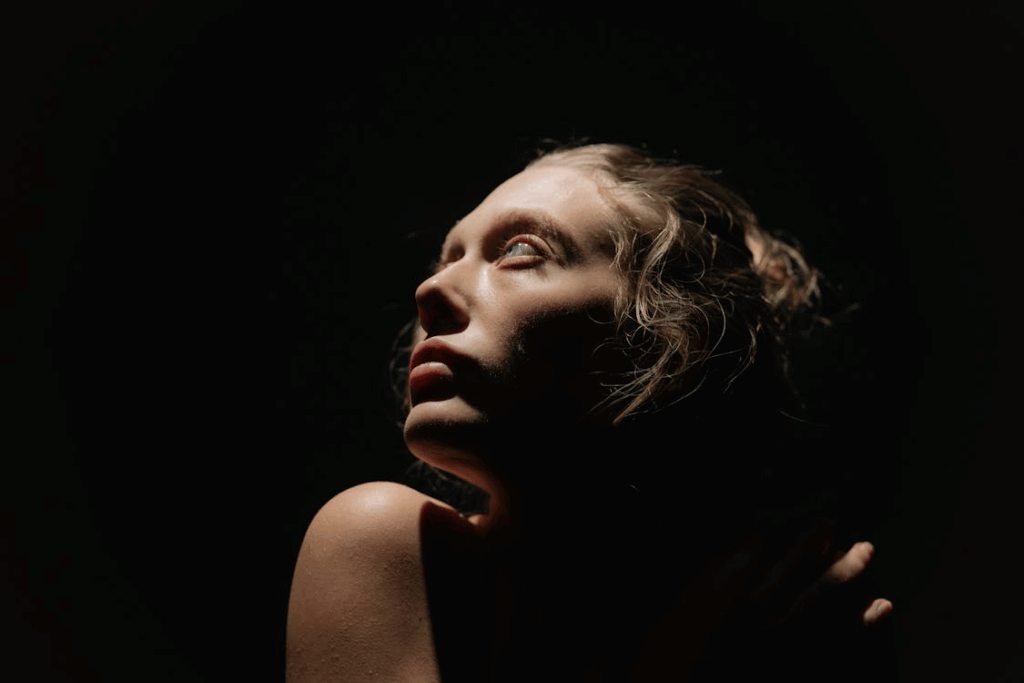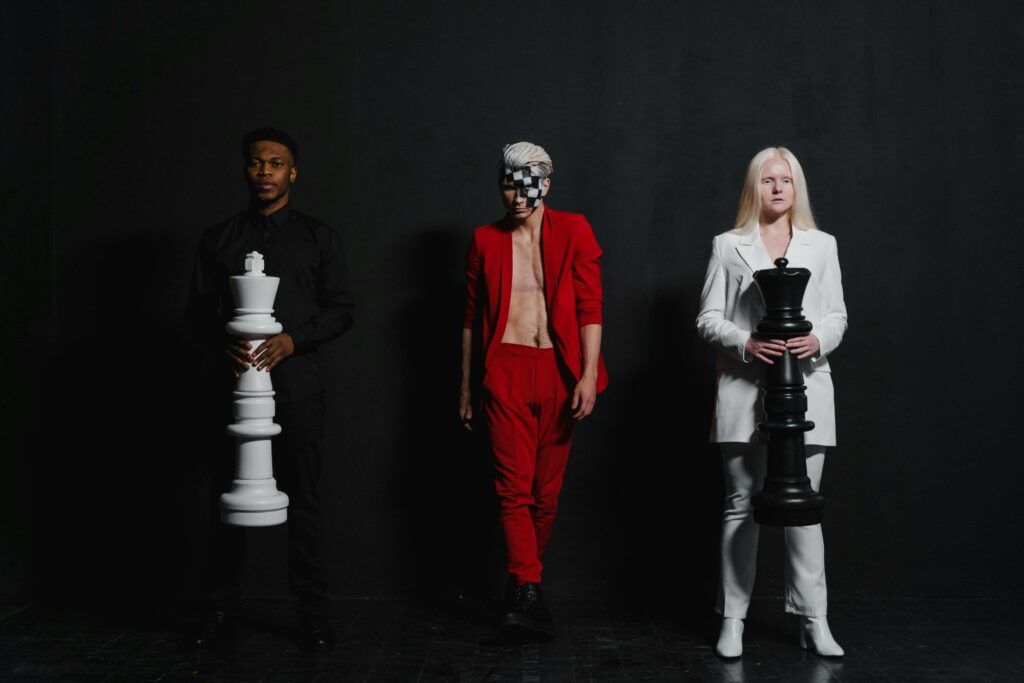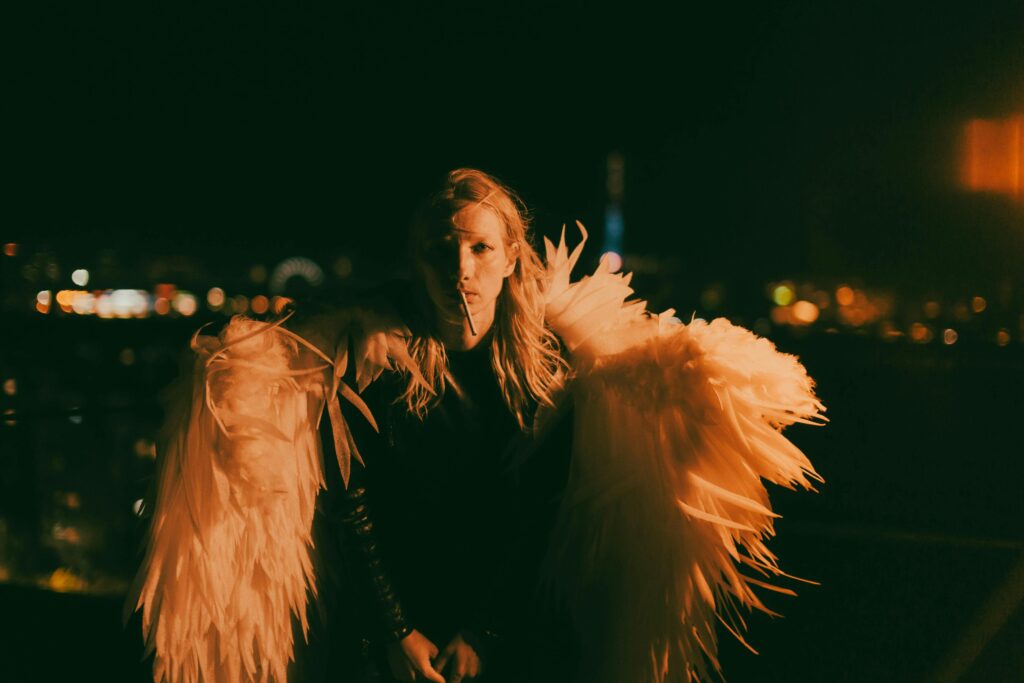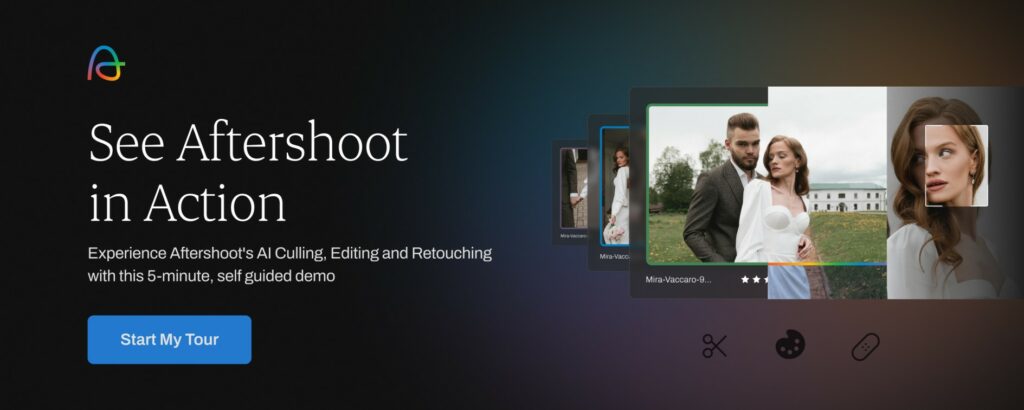Conceptual Portrait Photography: How to Tell Stories Without Words
You know the feeling: another Saturday, another batch of politely smiling headshots, and you're still tweaking skin tones at 1 a.m. Most photographers find that a significant portion of their working week gets swallowed by repetitive post-processing rather than actual picture-making. No wonder creative burnout lurks in every Lightroom catalog.
That's why conceptual portrait photography feels like an adrenaline shot to the imagination. Instead of asking, "How can I flatter my subject's jawline?" you start with questions like, "How can I visualize the taste of nostalgia?"
In this genre, the concept, not the lens, becomes the star of the show. Every prop, color choice, and lighting tweak exists to serve that bigger message.
The payoff? Ordinary sessions transform into visual riddles that spark conversation long after you've packed up the gear. A mirror becomes a metaphor for identity. A single shaft of light morphs into hope. Clients walk away with images that feel more like personal art pieces than standard portraits, and you walk away creatively recharged.
What is Conceptual Portrait Photography?
Conceptual portrait photography flips traditional portraiture on its head. Instead of asking "How do I make this person look good?" you're asking "How do I make this idea visible?" The magic happens when your image conveys complex emotions through visual symbolism rather than just showing someone's face.
This changes everything about how you shoot. Traditional portraits chase sharp eyes, flattering light, and clean backgrounds. Conceptual portraits treat every single element as a storytelling tool. That cracked mirror? It's screaming about a fractured identity. The blood-red fabric? Pure rebellion wrapped in silk.
Why should you care? Portrait photographers can finally break free from "smile and look pretty" sessions. Drop a few conceptual portraits into your portfolio and watch what happens — suddenly, you're not just another photographer. You're the one who makes people feel something.

Key Takeaways
Today's clients want images that spark conversation, not just documentation. Clients are moving from "make me look good" to "tell my story". They're willing to pay premium rates for portraits that feel like personal art pieces.
Conceptual work requires creative planning, from mood boards and symbolic props to intentional lighting that serves the narrative
Shooting conceptual isn't about complexity; it's about constraint and focus — one strong idea executed well
Editing leans toward consistency across the series while preserving the symbolic elements that carry meaning
Tools like Aftershoot help maintain creative momentum by handling the tedious culling of experimental frames
As conceptual portraiture grows in popularity, photographers who embrace this narrative approach are commanding higher rates and building more engaged client relationships.
Gear, Setup & Lighting Tips for Conceptual Portrait Photography
Photography communities consistently discuss the creative toll of technical workflows. As noted in various photography forums: "The hardest part isn't getting the shot—it's maintaining creative momentum when you're drowning in post-processing." Forum discussions reveal that conceptual photographers especially struggle with this because every frame requires artistic judgment, not just technical assessment.
Essential Gear for Idea-Driven Portraits
- Fast primes (35mm, 50mm, 85mm) at f/1.2–f/2.8 for razor-thin depth of field that isolates symbolic elements
- Versatile 24-70mm zoom as backup for spontaneous framing when the story evolves mid-shoot
- Props as vocabulary — mirrors for identity themes, fabric for texture contrast, books for nostalgia
- Solid backdrops — black, white, or gray seamless paper eliminate distractions and emphasize the subject
- LED panels with gels for mood lighting — green for dystopia, cyan for serenity, red for passion
Lighting Approaches that Serve the Narrative
- Single hard key light for dramatic tension and mystery
- Soft multi-light setup for dreamy, surreal storytelling
- Natural window light for intimate, vulnerable moments
- Colored gels to reinforce emotional themes
Camera Settings to Bring Symbolism to Life
- Aperture Priority mode (f/1.4–f/4) for creative depth of field control
- Continuous AF for subjects interacting with props
- High ISO capability (up to 6400) for moody available light scenarios
Keep it simple: the camera is a pen, props are punctuation, but the idea is still the story. Let the narrative call the shots.
Need help decoding your manual settings? Check out this guide below
How to Shoot Conceptual Portraits Step-by-Step
Turning abstract ideas into compelling portraits requires a structured approach that balances careful planning with spontaneous creativity. Here's the three-phase workflow that transforms fuzzy concepts into portfolio-worthy images.
1. Before the Shoot – Creative Planning & Mood Boards
Start with rapid-fire creative prompts: What colors obsess you lately? Recent dreams that stuck? Song lyrics that hit different? Social issues on your mind? Jot everything down — no filtering.
Create a keyword web around your strongest spark. Say "digital loneliness" — spider out: empty rooms, blue screens, reflection, isolation, connectivity. This turns fuzzy feelings into tangible shoot ingredients.

Build a tight mood board with 8-12 images, hex codes, and prop sketches. When everything sits together visually, weak links become obvious. A cohesive board prevents creative drift on set.
Impose one constraint to sharpen choices: single prop, two-color palette, one light source, or ten-minute time limit. Constraints turbo-charge creativity by forcing deeper exploration.
2. During the Shoot – Directing for Story and Symbolism
Use a three-act structure: warm-up (chat, show mood board, let subject handle props), hero frames (execute storyboarded shots exactly), experimental takes (loosen up, swap elements, chase spontaneous moments).
Direct for symbolism, not just flattery:
- Guide subjects to mirror props — clock held to heart for "time anxiety"
- Create negative space for "absence" themes
- Match lighting mood to emotional core — hard shadows for conflict, soft glow for hope
Keep props as supporting actors. If the oversized mask keeps sliding, ditch it and paint a shadow across the subject's face instead. Story matters more than literal objects.
Common Problems and Fixes:
- Shy subject → Play their music, shoot tethered for instant feedback
- Key prop breaks → Use silhouettes or shadows to represent the concept
- Story drift → Revisit mood board keywords, verbalize narrative aloud

3. After the Shoot – Selection, Editing & Delivery
The post-processing struggle for creative work is real across photography communities.
In photography forums, one photographer shared: "After a conceptual shoot, I'm looking at 800+ images and honestly don't know where to start. The technical stuff is obvious, but choosing which frames actually tell the story? That's the part that eats my whole weekend."
Cull with Three Questions
Does this communicate the core idea? Do micro-gestures reinforce the message? Is it technically sound for large prints? Everything else gets binned.
AI culling tools reduce 800+ experimental frames to 30 minutes of review instead of weekend-long marathons. More time for creative finishing, less carpal tunnel.
Sequence like a Filmmaker
Establishing shot → rising tension → climax → resolution. Well-paced galleries guide the viewer's eye and make print upsells effortless.
Send 3-image teasers within 48 hours with narrative context, so clients understand why the smoke machine mattered more than extra headshots.
Post-Processing Workflow for Conceptual Portraits
Start with global adjustments — exposure, white balance, baseline contrast. Apply your signature style preset, but adjust intensity per image. Conceptual work demands cohesion across the series while preserving symbolic elements.
Keep one element imperfect: stray hair, natural fabric fall, slight asymmetry. Viewers connect to authenticity, not digital perfection.

Popular Editing Aesthetics
- Cinematic drama with teal-and-orange color grading for tension-filled narratives
- Painterly softness using film emulation for nostalgic or romantic themes
- High-contrast surrealism with selective desaturation for psychological concepts
Color Grading for Narrative
Complementary colors create tension (red vs. cyan), while analogous palettes suggest harmony (blues into purples). Let color theory carry emotional weight. Check out this guide if you need help with color grading
AI Workflow Integration for Faster Turnarounds
If you’ve ever wrapped a shoot, dumped your cards, and stared at a mountain of files wondering where to even start — you’re not alone. That’s where AI can quietly step in and take the heavy lifting off your plate.
With tools like Aftershoot, you can:
- Cull without the grind – Instead of combing through every frame, AI picks out the sharp, eyes-open keepers so you can jump straight to the fun part.
- Keep your style consistent – Apply edits that match your look across the whole gallery, so it feels cohesive without hours of tweaking.
- Retouch in seconds – Get natural, polished portraits without spending your night fixing skin or removing objects
It’s not about replacing your creative touch — it’s about getting you from “card dump” to “client gallery” without burning half a week behind a screen.
If you’ve ever wished your post-shoot workflow ran itself, take our self-guided demo for a spin. You’ll see exactly how Aftershoot does the heavy lifting — so you can get back to the fun part.

How Much Do Conceptual Portrait Photographers Make?
Market positioning affects everything. Because conceptual sessions require extensive planning, creative direction, and artistic vision, they command premium rates compared to standard headshots.
Income ranges vary by market and experience:
- Emerging conceptual photographers: $300-800 per session
- Established narrative portraitists: $1,200-3,500 per session
- High-end conceptual artists: $5,000+ for bespoke campaigns
Revenue multiplication strategies:
- Limited-edition fine art prints ($200-2,000+ each)
- Brand campaigns requiring visual storytelling ($3,000-15,000)
- Editorial magazine assignments ($1,500-8,000)
- Licensing for book covers, album art, film posters
The efficiency factor: Your real metric isn't the session fee — it's effective hourly rate after post-production. Conceptual shoots generate 500-1,000+ experimental frames that demand artistic curation, not just technical culling.
AI-powered workflows like Aftershoot transform this bottleneck. Cut culling from 8 hours to 30 minutes, and suddenly your $2,000 session becomes genuinely profitable instead of minimum-wage drudgery. Time saved equals money earned and creative energy preserved for the next mind-bending concept.
Deliver Powerful Conceptual Portraits Faster with AI Workflow Tools
Conceptual portrait photography demands sustained creative vision through every stage, from initial spark to final delivery. But here's the creative killer: while you're obsessing over symbolic perfection, you're drowning in hundreds of experimental frames that demand artistic judgment, not just technical assessment.
That's where smart workflow choices become your creative lifeline. Aftershoot excels at what conceptual photography demands: intelligent culling that preserves artistic experiments while identifying emotionally resonant frames, then applies your signature style consistently across complex compositions. You perfect the art of translating ideas into visual metaphors; let AI handle the tedious work.
Try it free for 30 days and reclaim your creative momentum.
